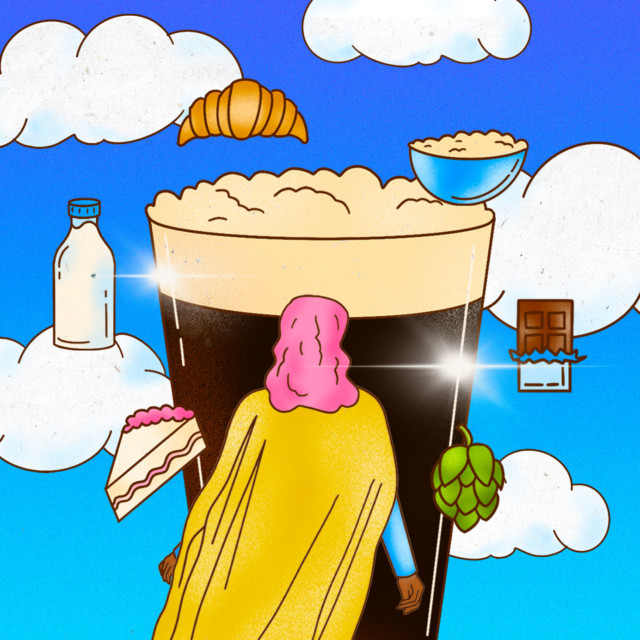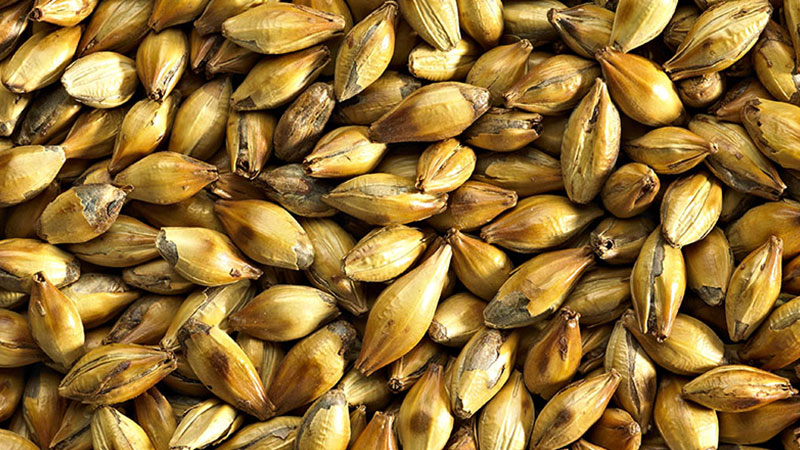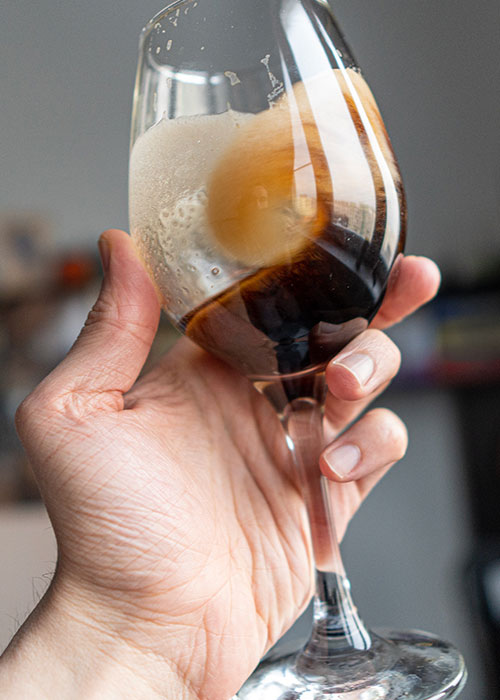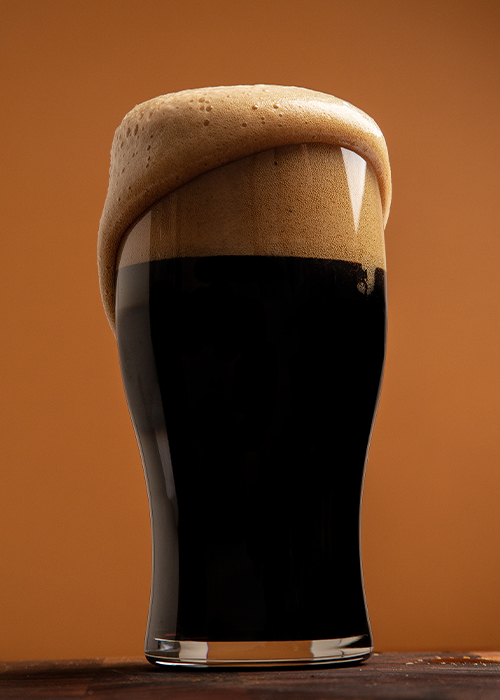Let’s get back to the basics with one of the most versatile and forgiving beer styles: the stout. The roasted malts used in stout recipes naturally have familiar notes of dark chocolate, French roast coffee, or, if you veer in certain directions, sticky dried figs or brown sugar.
What’s great about this style is that every recipe starts with the same basic building blocks, and from there a brewer can decide to make a stout that is silky and sweet, dark and roasty, hopped to high heaven, or balanced and boring.
This author prefers something boozy, but not too hot, with a little fruity English yeast character and not enough roast to stir memories of nights by a campfire. In fact, a recipe in that vein recently won a gold medal at the National Homebrew Competition.
There are many complicated methods to tweak stout recipes; time-consuming ones like double mashing or expensive ones like using real vanilla beans. But there are also more approachable ways to change a base recipe with delicious results — and not too much effort. Mix and match the options below and you’ll be curled up on the couch with a fresh stout before we reach the true dark depths of winter.
Start Out With the Basics
Every “Choose Your Own Adventure” book starts with a basic plot, and a stout recipe is no different. It will always start with about 70 to 80 percent base malt. For a blank canvas, something neutral like an American two-row works great. To start off with some mild nutty flavor look for a British base malt like Maris Otter.
From there, it’s time to add what is often denoted as *the* ingredient that separates a stout from a porter: roasted malt or barley. These roasted grains bring intense char notes to the beer that can lean acrid if there are no balancing flavors. For a more chocolate- and caramel-forward beer, use 10 to 15 percent caramel and crystal malts matched with 5 percent roast malts. On the opposite end of the stout spectrum, to get big, roasty coffee flavors, go for 10 to 15 percent roasted malts or barley balanced by just 5 to 10 percent caramel and crystal malts.
Stout Base Recipe
Base Recipe = Grains and Hops
Grain bill (Grist)
75-80% American 2 Row or British Base Malt
5-15% Roast Barley and/or Roasted Malts
5-15% Caramel or Crystal Malts (mix colors for a more complex flavor)
0-5% Huskless or Debittered Black Malt for color adjustment (brewing software like Beer Smith will indicate SRM)
Hops
50 IBU of hops, about 1 ounce 13-15% Alpha Acid hops (I like Magnum and CTZ) added at 60 minutes remaining in the boil
Yeast
American or English ale yeast
The Easy Way to Make it an American Stout
What do we love in America? Hard Seltzer Hops, it’s hops. For many classic beer styles, the biggest difference between an American version and a British or German version is simply the hops. (Think Porter or Pilsner.) That’s similar here.
To make stout more American in nature, add a few more hop additions using classic American hops that won’t clash with the roast flavors of a stout.
For example, add a couple of ounces of Centennial or Cascade at five minutes left in the boil, and another ounce or two at flame out.
Then, ferment with a clean American ale yeast. (I love White Labs 001, California Ale yeast, for a reliably clean fermentation, but Safale US-05 is a good dry yeast alternative.)
If you really want a stout recipe with a robust American attitude, you can also up the percentage of roasted barley by a percent or three to get some real intensity going.
Oh? You thought a real American attitude would be throwing chocolate cake into the mash? We’ll get to that.
Make It a Milk Stout
This style of stout is perceived as “sweeter” than other examples. It might seem like this would come from adding a pound or so of unfermentable milk sugar to the recipe, but lactose is only very mildly sweet. And since yeast can’t ferment it, lactose acts to increase body, not sweetness. Reducing the hop bitterness in the beer, combined with a slightly full mouthfeel, makes this style seem like a perfect drink to substitute for dessert.
The best milk stouts use lactose for between 5 and 8 percent of the grist. You may be tempted to increase this, but please stay below 14 percent lactose for your first milk stout. Since lactose doesn’t have the sweetness of sugar, it can feel heavy, even syrupy on the palate at high concentrations. With too much of this not-so-sweet sugar, flavors in the beer will start to dull.
To make our base recipe (above) a milk stout, lower the hops addition to achieve 40 IBU; and add 5 to 8 percent lactose toward the end of the boil, making sure to stir it so it doesn’t clump. Then, ferment as normal with American or English ale yeast.
Make It an Oatmeal Stout
Similar to milk stout, making our base beer into an oatmeal stout really only requires one additional ingredient to change the mouthfeel and balance of this beer.
Just as yeast can’t ferment milk sugar, and the excess sugars make the beer feel creamy in your mouth, beta glucans from oats aren’t broken up during the brewing and fermentation process. These gummy compounds left in the beer give it a slick, smooth mouthfeel, and better head retention to boot!
A good place to start with oats, which should be flaked oats so they are easy to add to the mash, is 10 percent of the grist. This is low enough that you shouldn’t run into sparge issues (because the gummy compounds stop runoff through the grain bed) — and it’s still plenty to create a noticeable difference in mouthfeel. If you feel like upping the addition of oats, keep it below 30 percent. At this point the change in beer texture tends to go from luxe and smooth to oily.
Of course, oats produce more than mouthfeel; they also have their own flavor. To play up that cereal-like oat taste, you can lightly toast the oats in the oven on a very clean baking sheet for about 10 minutes at 350 degrees Fahrenheit (about 175 degrees Celsius).
Flaked (and potentially toasted) oats should be added to your mash with the rest of the grains. Ferment as normal with an American or English ale yeast.
The Easy Way to Make it an Imperial Stout
There’s no real definition for what makes a beer imperial, but it’s generally accepted it’s elevated alcohol and increased intensity in flavor.
Increasing alcohol is simple enough: Give yeast more sugar, and they will do their best to turn it into more alcohol. An easy way to increase alcohol is by adding dry malt extract (DME) to the boil and/or adding some table sugar to the fermenter.
Adding DME is ideal because it has the protein and sugar composition of standard wort — because it is dehydrated wort. This means you’ll be providing your yeast with more fermentables without needing to increase the size of your mash tun, which when brewing on a homebrew scale is a very helpful thing.
The DME won’t affect the body of the beer because it will have the same mix of fermentables and unfermentables as the rest of the wort. Sugar, on the other hand, will impact the final body of the beer by drying it out. Because table sugar is 100 percent fermentable, adding it to the fermenter results in pure alcohol production. Pure ethanol is thinner in body than the rest of the beer, resulting in a lighter body overall. A pound or so won’t have a huge impact, but it’s important to watch out for this if the recipe is for a particularly bitter or extremely roasty beer, as these flavors can get unpleasant and over-drying without body for balance.
The rule of thumb is a pound of DME increases the final alcohol about 0.5 percent ABV, so adding two pounds of DME to the boil will get you an additional 1 percent ABV. Generally, for a 5-gallon batch, adding a pound of table sugar will also result in a 1 percent increase in alcohol.
To make our base recipe imperial, there are a few changes.
Increase the specialty malts a little to intensify the flavor. Let’s say an additional 10 percent overall, some of that coming from roasted malts, some of it coming from crystal or caramel. Add about two pounds of DME in the last 10 minutes of the boil, being sure to stir it to keep it from scorching. Increase the hops by 50 percent — and feel free to add a flame out addition at the end of the boil.
Twelve to 24 hours after fermentation has begun, make a pound of sugar into a syrup by adding a little water, allowing it to boil for several minutes, and letting it cool completely before adding it to the fermenter. (Boiling the sugar is important for sanitation.) This lets the yeast wake up and start working before they are bombarded with too much sugar, something that can stress them out and make them produce off flavors.
The Easy Way to Make It a Pastry Stout
Finally, the pastry stout. To achieve this newer, less-defined style, we’re going to throw in a little of all of the above techniques.
First, to give a beer a cake-like impression, it is important to increase mouthfeel. This can be achieved through adding both lactose and oats. Add 5 to 8 percent of each as a starting point. Then, during the boil, add a pound or two of DME for more intensity, but skip adding sugar. We don’t want to thin the body of this beer at all.
Then comes the pastry part. As many pro brewers have explained in past BIY columns, adding extras that aren’t hops, malt, or sugar is often best done in the fermenter, where the brewer has control over adding ingredients to the beer without worrying how heat or fermentation will impact their flavor.
This is also a good idea with pastry stouts. After fermentation, pull a little wort in a measured amount (8 to 12 ounces is a nice place to start). Then try dosing it with different extracts like almond, vanilla, or even raspberry until you achieve the ideal flavor. Be sure to count the drops you add as you go, because you’ll use that count to scale up the dosing amount for the whole batch.
A hint I’ve taken from Milk Bar chef Christina Tosi is that the clear vanilla extract (found here) has more of an artificial “Birthday Cake” flavor than darker vanilla extracts. Try using it in a Birthday Cake Pastry Stout for that whipped frosting flavor that is hard to put a finger on.



